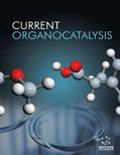
Current Organocatalysis
Scope & Guideline
Pioneering Insights for a Sustainable Future
Introduction
Aims and Scopes
- Organocatalytic Synthesis:
The journal publishes studies on the development, optimization, and application of organocatalysts in synthetic organic chemistry, highlighting novel catalytic reactions and methodologies. - Green Chemistry Approaches:
There is a strong emphasis on environmentally benign synthesis methods, including the use of biodegradable solvents, microwave-assisted reactions, and other sustainable practices. - Biocatalysis and Natural Catalysts:
Research on biocatalytic processes and the use of natural products as catalysts is a key area, showcasing the potential of enzymes and other biological catalysts in organic transformations. - Heterocyclic Compounds Synthesis:
The journal frequently features articles on the synthesis of heterocycles, which are crucial in medicinal chemistry, demonstrating various catalytic strategies for their formation. - Theoretical and Computational Studies:
Papers that integrate computational modeling with experimental work to predict reaction outcomes and understand mechanisms are an important aspect of the journal's contributions.
Trending and Emerging
- Sustainable and Eco-Friendly Catalysis:
The journal increasingly features research on sustainable methodologies, such as solvent-free reactions, and the use of renewable resources, aligning with global trends towards sustainability. - Multicomponent Reactions:
There is a growing interest in multicomponent reactions (MCRs), which offer efficient synthetic strategies with reduced steps and waste, showcasing their importance in organic synthesis. - Nanocatalysts and Hybrid Systems:
The emergence of nanotechnology in catalysis, with a focus on hybrid systems that combine organocatalysts with nanomaterials, is gaining attention for their enhanced catalytic properties. - Asymmetric Synthesis:
Research on asymmetric organocatalysis is on the rise, particularly in the synthesis of chiral compounds, reflecting the increasing demand for enantiomerically pure substances in pharmaceuticals. - Biocatalytic Innovations:
There is a notable increase in studies exploring biocatalysts and their applications, as researchers seek to harness the efficiency and specificity of biological systems in synthetic processes.
Declining or Waning
- Metal-Catalyzed Reactions:
There is a noticeable decrease in the focus on traditional metal-catalyzed reactions as the journal shifts towards organocatalysis and greener alternatives, reflecting a broader trend in the field. - Non-Green Synthetic Methods:
Research employing conventional synthetic methods that lack sustainability or environmental consideration is less frequently published, indicating a move towards greener chemistry. - Classical Organic Synthesis Techniques:
Papers focusing on well-established, classical organic synthesis techniques without innovative improvements or sustainable approaches are appearing less frequently.
Similar Journals
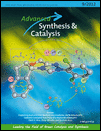
ADVANCED SYNTHESIS & CATALYSIS
Pioneering breakthroughs in synthesis and catalysis.ADVANCED SYNTHESIS & CATALYSIS is a prestigious academic journal published by Wiley-VCH Verlag GmbH, based in Germany. This journal, with ISSN 1615-4150 and E-ISSN 1615-4169, plays a pivotal role in the fields of Chemistry and Chemical Engineering, earning commendable rankings such as Q2 in Catalysis and Q1 in Organic Chemistry in 2023. Its high impact factor and recognition—ranking #18 in both Organic Chemistry and Catalysis—further underscore its significance as a platform for groundbreaking research and innovative methodologies. Spanning from 1996 through 2024, ADVANCED SYNTHESIS & CATALYSIS aims to disseminate high-quality, cutting-edge studies related to synthetic processes and catalytic technologies, ensuring accessibility via their open access options. By fostering a vibrant scholarly community, this journal serves as an essential resource for researchers, professionals, and students dedicated to driving advancements in synthetic and catalytic chemistry.
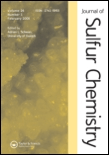
Journal of Sulfur Chemistry
Charting New Territories in Sulfur ScienceThe Journal of Sulfur Chemistry, published by Taylor & Francis Ltd, is a pivotal resource dedicated to the field of sulfur chemistry, offering a unique platform for researchers, professionals, and students alike to explore innovative discoveries and advancements. With an ISSN of 1741-5993 and an E-ISSN of 1741-6000, this journal has been a prominent contributor to the academic discourse since its inception in 2004, converging knowledge and research through the year 2024. Recognized in the 2023 Scopus rankings, it holds a strong position at Q3 in the category of miscellaneous chemistry, ranking #173 out of 408, within the 57th percentile, underscoring its role as a valuable asset in the chemistry community. Although the journal does not currently offer open access, it remains a vital source for novel insights and scholarly articles, significantly impacting ongoing research and education in sulfur chemistry.

ALDRICHIMICA ACTA
Elevating Organic Chemistry through ExcellenceALDRICHIMICA ACTA is a prestigious journal published by Aldrich Chemical Co Inc, focusing on the dynamic field of organic chemistry. With an impressive H-index and a strong Scopus rank of #38 out of 211 journals, this quarterly publication has established itself in the Q1 quartile of organic chemistry, a testament to its influence and relevance in research. The journal, which has been in circulation since 1990, disseminates high-quality research articles, reviews, and practical insights tailored for chemists, researchers, and industry professionals. While the journal operates under a subscription model, it remains a crucial resource for staying updated with the latest advancements and methodologies in organic chemistry. Located in Milwaukee, Wisconsin, ALDRICHIMICA ACTA continues to contribute significantly to the field, promoting excellence in scientific communication and collaboration.

Mini-Reviews in Organic Chemistry
Exploring the Frontiers of Organic Chemistry.Mini-Reviews in Organic Chemistry, published by Bentham Science Publishers, is an esteemed journal in the field of organic chemistry, dedicated to presenting concise, thoughtful reviews that encapsulate the rapid advancements in this dynamic area of study. Since its inception in 2005, the journal has become a valuable resource for researchers, professionals, and students interested in the latest developments and trends, featuring an HIndex indicative of its scholarly impact. With its 2023 Scopus ranking placing it in the 52nd percentile and categorized as Q3 in Organic Chemistry, it offers insights that bridge the gap between fundamental research and practical applications. While not an open-access journal, it provides significant access options for institutional journals and library systems. Situated in the United Arab Emirates, Mini-Reviews in Organic Chemistry continues to serve as a beacon for innovation and knowledge dissemination in organic chemistry, ensuring that its audience remains at the forefront of scientific discovery.
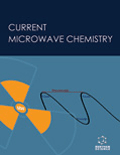
Current Microwave Chemistry
Advancing Innovative Techniques in Chemical ResearchCurrent Microwave Chemistry is a pioneering academic journal dedicated to the dynamic and rapidly evolving field of microwave-assisted chemistry. Published by Bentham Science Publishers Ltd, this journal aims to disseminate high-quality research that explores innovative methodologies, novel applications, and the fundamental principles underlying microwave technology in chemical processes. Offering a platform for researchers, professionals, and students, Current Microwave Chemistry plays a crucial role in enhancing the understanding and application of microwave chemistry across disciplines such as synthetic chemistry, materials science, and pharmaceutical research. By facilitating open access to groundbreaking studies, this journal encourages collaboration and knowledge exchange, positioning itself as an essential resource for those looking to push the boundaries of what is achievable in chemical science.
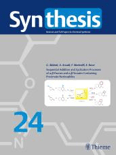
SYNTHESIS-STUTTGART
Innovating Synthetic Methodologies for a Sustainable Future.SYNTHESIS-STUTTGART
Published by the esteemed Georg Thieme Verlag KG, SYNTHESIS-STUTTGART stands as a vital resource in the field of Chemistry, specifically focusing on Organic Chemistry and Catalysis. With an impressive publication history dating back to 1970 and continuing through 2024, it serves as a platform for innovative research and developments in synthetic methodologies and their applications. The journal holds a significant impact factor, reflecting its influence within the academic community, and is recognized in the Scopus rankings as a reputable source in its categories, with a rank of #99/211 in Organic Chemistry and #43/68 in Catalysis. Researchers, professionals, and students alike can benefit greatly from its content, which upholds rigorous peer-review standards and contributes to the global discourse in these critical scientific domains.

HELVETICA CHIMICA ACTA
Connecting Ideas that Shape the Future of ChemistryHELVETICA CHIMICA ACTA, published by WILEY-V C H VERLAG GMBH, stands as a pivotal journal in the fields of chemistry and chemical research. Established in 1918, this esteemed journal spans a diverse array of topics, including biochemistry, catalysis, drug discovery, inorganic and organic chemistry, as well as physical and theoretical chemistry. With influence reflected in its noteworthy Q2 and Q3 quartile rankings across these categories as of 2023, HELVETICA CHIMICA ACTA continues to capture the interest of the global scientific community. Although not an open-access journal, it remains accessible through various academic institutions, ensuring broad reach and collaboration opportunities. Researchers, professionals, and students alike will find its meticulously peer-reviewed articles critical for advancing knowledge and fostering innovation within the chemical sciences. As the journal converges toward 2024, it remains committed to publishing high-quality, impactful research that supports the evolution of chemistry across its multifaceted disciplines.

CCS Chemistry
Advancing Chemistry Through Open Access InnovationCCS Chemistry, published by the esteemed Chinese Chemical Society, is a leading open-access journal dedicated to advancing the field of chemistry. Since its inception in 2019, the journal has rapidly gained recognition, achieving a remarkable impact factor that places it in the prestigious Q1 category in Chemistry (Miscellaneous) as of 2023. With a Scopus ranking of #41 out of 408 in General Chemistry, CCS Chemistry represents the top 10th percentile in its category, reflecting its commitment to high-quality research and innovation. The journal serves as a vital platform for researchers and professionals to share their findings, showcase cutting-edge methodologies, and engage with the latest developments in various chemistry subfields. Accessible to a global audience, CCS Chemistry ensures that groundbreaking research is available without barriers, making it an indispensable resource for students and academics aiming to stay at the forefront of chemical sciences. For further details, submissions, and access to published articles, please visit the journal's website.

ACS Organic & Inorganic Au
Exploring the Intersection of Organic and Inorganic ChemistryACS Organic & Inorganic Au, published by the American Chemical Society, stands as a premier open-access journal dedicated to advancing the fields of organic and inorganic chemistry. Since its inception in 2021, this journal has swiftly risen to prominence, achieving a commendable Q1 classification in Inorganic Chemistry, Organic Chemistry, and Physical and Theoretical Chemistry as of 2023. With an ISSN of 2694-247X, it provides a vital platform for researchers, professionals, and students to disseminate their findings and engage with cutting-edge work across converged disciplines. Operating from its headquarters in Washington, DC, ACS Organic & Inorganic Au is committed to fostering a collaborative research environment, encouraging rigorous peer review, and ensuring the wide accessibility of high-quality scholarly articles. With its open-access model, readers worldwide can freely access and utilize research findings, promoting a global exchange of knowledge crucial for driving innovation in chemistry.

INDIAN JOURNAL OF HETEROCYCLIC CHEMISTRY
Advancing Knowledge in Heterocyclic ChemistryINDIAN JOURNAL OF HETEROCYCLIC CHEMISTRY, published by CONNECT JOURNALS, is a vital resource in the fields of organic chemistry and biochemistry, aiming to advance research and promote innovation within the realm of heterocyclic compounds. Established in 1996, this journal has successfully converged into an influential publication with a commitment to disseminating high-quality, peer-reviewed research articles that enhance the understanding of heterocyclic chemistry applications. Although it currently holds a Q4 quartile ranking in both biochemistry and organic chemistry according to the 2023 categorizations, its broader contributions to the scientific community should not be underestimated, as it seeks to support the ongoing dialogue among researchers, professionals, and students. The journal operates from Ghaziabad, India, providing open access to its publications, thereby fostering a collaborative and informative environment for its international readership. With an ISSN of 0971-1627 and a special focus on contemporary challenges and developments in the field, the INDIAN JOURNAL OF HETEROCYCLIC CHEMISTRY is poised to make a significant impact as it continues to evolve through 2024 and beyond.